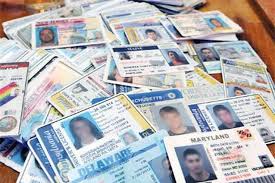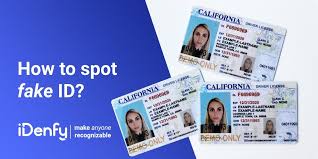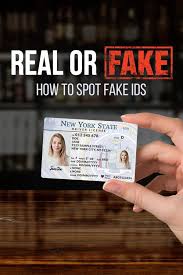counterfeit ID
Introduction
In today’s digital era, where personal identification is increasingly required for everything from accessing online services to traveling across borders, identity verification has become a crucial aspect of modern life. Unfortunately, this growing demand for verified identities has also given rise to an underground market: counterfeit IDs.
Counterfeit IDs—fake identification cards designed to mimic legitimate forms of ID such as driver's licenses, passports, or student cards—have become a significant global issue. The trade and use of these illegal documents have far-reaching implications, not only for the individuals purchasing and using them but also for businesses, governments, and society at large.
In this article, we will explore the many facets of the counterfeit ID industry, from its origins and market trends to the various types of people who buy these fraudulent documents. We will also examine the technological advances in ID verification systems, the legal consequences of using counterfeit IDs, and the social risks associated with their proliferation.
1. Market Analysis of the Counterfeit ID Industry
1.1 The Origins of the Counterfeit ID Market
Counterfeit identification has been around for as long as there have been formal systems of identification. In the past, it was relatively rare and limited to individuals creating physical forgeries by hand. However, with the advent of sophisticated printing technologies and the rise of the internet, counterfeit ID production has transformed into a multi-million-dollar illegal industry.
1.2 The Global Demand for Fake IDs
The demand for counterfeit IDs stems from a variety of sources. Many individuals seek them for underage access to restricted activities such as alcohol consumption, club entry, and gambling. In certain countries, fake IDs are used for more severe purposes, including illegal immigration, bypassing government regulations, or even engaging in fraudulent financial activities.
Online marketplaces, often hosted on the dark web, have made counterfeit IDs more accessible to the general public. These underground sellers offer fake documents that mimic official government-issued IDs with astonishing accuracy. The global reach of these operations has made it easier than ever for individuals to obtain fake identification, often delivered via discreet shipping methods.
1.3 Leading Markets for Counterfeit IDs
The largest markets for counterfeit IDs are often found in countries with strict age restrictions or those with high immigration rates. North America, particularly the United States, is one of the largest regions for fake ID consumption due to the legal drinking age of 21. Europe, with its diverse regulatory environments, also sees a high demand for counterfeit IDs, especially in countries with restrictive immigration policies.
Market statistics:
- Estimates show that the counterfeit ID industry is worth billions annually, with the dark web playing a major role in its expansion.
- A significant portion of fake IDs originates from regions like China, Eastern Europe, and parts of Southeast Asia, where fake documents can be produced cheaply and shipped globally.
2. Product Features of Counterfeit IDs
2.1 Quality and Realism
Counterfeit ID manufacturers pride themselves on the realism of their products. With advancements in printing technology, many fake IDs are indistinguishable from legitimate ones at a glance. High-quality counterfeit IDs replicate key features such as:
- Holograms and watermarks
- Microprinting
- UV ink and infrared-visible features
- Magnetic stripes and barcode encoding
Top-tier counterfeit IDs may even pass inspection under various security devices, making them extremely difficult to detect through casual observation.
2.2 Types of Counterfeit IDs
Counterfeit IDs come in various forms, tailored to different needs:
- Driver’s licenses: These are the most common type, used by individuals to circumvent age restrictions for alcohol and tobacco purchases.
- Passports: High-value fakes often used for more serious activities, such as evading law enforcement or crossing international borders illegally.
- Student IDs: Used by individuals to gain access to student discounts or fraudulent benefits.
- Government IDs: These are typically more sophisticated, as they replicate the highly secure documents used for official purposes, including voting or benefits access.
2.3 Online Customization
Many counterfeit ID services allow for a high degree of customization. Buyers can select from a range of options, including the state or country of issuance, specific personal details, and even professional titles. Some sellers offer packages where multiple fake IDs can be purchased together at discounted rates, appealing to group buyers like college students.
3. Target Audience for Counterfeit IDs
3.1 Underage Individuals
One of the primary groups seeking counterfeit IDs is young adults, particularly teenagers under the legal drinking or gambling age. In countries like the United States, where the legal drinking age is set at 21, the pressure to participate in social activities involving alcohol can lead many minors to seek fake identification.
3.2 Immigrants
Another significant demographic for counterfeit IDs is immigrants, especially those looking to bypass immigration laws. In some cases, these individuals use fake documents to secure employment, access social services, or travel without detection by law enforcement.
3.3 Individuals with Criminal Intent
Beyond underage access and immigration, a more dangerous segment of the counterfeit ID market is criminals who use fake IDs for illicit purposes. From fraud and identity theft to money laundering and organized crime, these individuals rely on sophisticated counterfeit documents to conceal their true identities.
3.4 Tourists and Expats
Occasionally, tourists and expats seek counterfeit IDs for less malicious reasons, such as avoiding bureaucracy or accessing services that are difficult to obtain while abroad. However, this practice still puts them at legal risk, particularly if they are caught using these documents.
4. Risks and Legal Consequences of Using Counterfeit IDs
4.1 Personal Risks
For individuals purchasing counterfeit IDs, the risks are significant. In many cases, buyers are unaware of the full legal implications or the penalties they face if caught. The use of a fake ID can lead to:
- Arrest and criminal charges
- Fines and community service
- A permanent criminal record, affecting future employment opportunities or visas
- Potential deportation for immigrants
4.2 Business Risks
Businesses that fail to properly detect counterfeit IDs are also at risk. Bars, clubs, and retailers face fines, legal action, and potential loss of their liquor or operating licenses if they are caught serving underage patrons using fake IDs.
4.3 Societal Implications
The widespread availability of counterfeit IDs undermines the integrity of identification systems, resulting in a host of societal issues. It creates an environment where individuals can evade accountability, whether for underage drinking, financial fraud, or illegal immigration. This has a destabilizing effect on systems meant to protect the public.
5. Technological Advances in ID Verification
5.1 AI and Machine Learning
As counterfeit IDs have become more sophisticated, so too have the tools for detecting them. Artificial Intelligence (AI) and machine learning systems are now used by businesses and governments to analyze IDs more accurately. These systems can compare a document’s features with known legitimate IDs, spotting inconsistencies that a human might miss.
5.2 Biometrics
Biometric systems, which use unique physical traits like fingerprints or facial recognition, are increasingly being integrated into identification systems. By cross-referencing IDs with biometric data, businesses and governments can more effectively prevent the use of counterfeit documents.
5.3 Blockchain for Identity Verification
Blockchain technology is another area being explored for securing identity information. A decentralized, tamper-proof blockchain ledger could make it significantly harder for counterfeiters to create fake IDs, as any attempt to alter or forge an ID would be immediately identifiable.
6. Conclusion: Combatting the Counterfeit ID Crisis
Counterfeit IDs represent a growing global issue, fueled by technological advancements and the increasing reliance on identity verification in both personal and professional spheres. While counterfeit IDs can offer temporary advantages to individuals seeking to circumvent regulations, the risks far outweigh the benefits.
From legal consequences to the societal harm caused by fraudulent identification, the stakes are high. As technology continues to evolve, so too must the methods for combating counterfeit IDs. Businesses, governments, and individuals must remain vigilant and invest in the latest tools and technologies to detect and prevent the use of fake documents.
In the end, addressing the counterfeit ID market is not just a matter of law enforcement but of public education and awareness. By understanding the risks, identifying the root causes of demand, and implementing sophisticated detection systems, we can reduce the prevalence of counterfeit IDs and protect the integrity of personal identification systems worldwide.
 Delaware ID Features
Delaware ID Features
 fake ID purchase guide
fake ID purchase guide
 Fake ID Buying Guide
Fake ID Buying Guide
 benefits of fake ID
benefits of fake ID